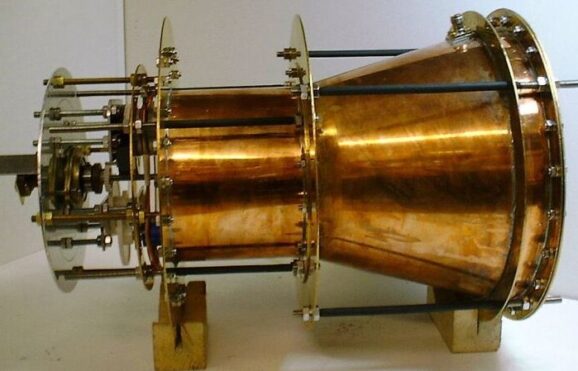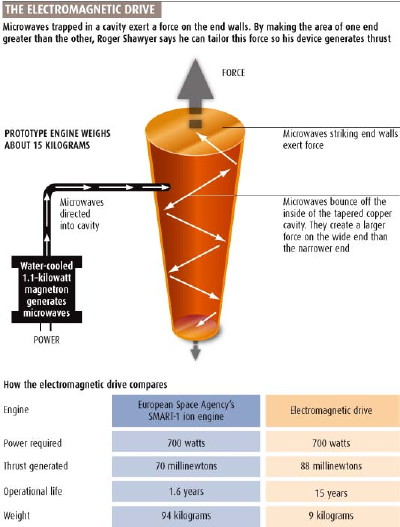Microwave Propulsion Breakthrough Could Revolutionize Space Travel
This article is more than 2 years old

U.S. scientist Guido Fetta devised a microwave thruster called the “Cannae Drive”—a reference to the Battle of Cannae or perhaps to Star Trek’s Scotty—that operates without propellant. After some cajoling, he got NASA to agree to give it a try, and at the recent Joint Propulsion Conference, the space agency presented the results of its validation testing, which confirms that this system, once thought to be impossible, actually works. NASA spent eight days “investigat[ing] and demonstrat[ing] viability of using classical magnetoplasmadynamics to obtain a propulsive momentum transfer via the quantum vacuum virtual plasma.”
Part of the reason for the mumbo-jumbo is that this approach shouldn’t work. It involves a radio frequency resonant cavity, which basically means electrically-generated microwaves bouncing around in an enclosed space. NASA’s testing indicated that this generates “a force that is not attributable to any classical electromagnetic phenomenon and therefore is potentially demonstrating an interaction with the quantum vacuum virtual plasma.”
What they’re alluding to at the end there is that perhaps the drive interacts with particles and anti-particles which seem to spontaneously appear and disappear. Right now, quantum vacuum plasma thrusters (Q-thrusters) are only theoretical, but highly desirable given that propellant wouldn’t be necessary and the fluctuations of the quantum vacuum would provide sufficient propulsion force. NASA estimates that if such a thruster could be created, it could get a spacecraft to Proxima Centauri, the next star closest to us, about 4.24 light years from the sun, in 30 years. It could also trim the time of a Mars mission from months to weeks.

Fetta’s drive isn’t the first to make this claim. A British scientist named Roger Shawyer came up with something he calls the EmDrive, a similarly propellant-free propulsion system that uses microwaves to “convert electrical energy into thrust.” Skeptics have been vocal, but last year a research team from China built their own EmDrive and confirmed that it produces enough power to launch a satellite.
Only now, in the context of NASA’s results, are people starting to realize that maybe Shawyer was onto something—perhaps even a game changer.












